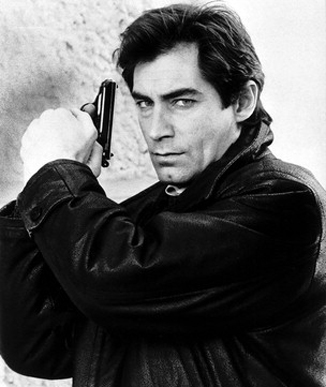 Following Sean Connery’s return to British intelligence in Diamonds Are Forever (1971), Roger Moore is the new Bond, James Bond in Live and Let Die. Note to trivia buffs: this is film number eight based on Ian Fleming’s second Bond novel and Moore is the third James Bond–following Connery, George Lazenby, and Connery again.
Following Sean Connery’s return to British intelligence in Diamonds Are Forever (1971), Roger Moore is the new Bond, James Bond in Live and Let Die. Note to trivia buffs: this is film number eight based on Ian Fleming’s second Bond novel and Moore is the third James Bond–following Connery, George Lazenby, and Connery again.
The man who once essayed the title role in the tv series based on Leslie Charteris’ The Saint books imbues agent 007 with a lighter touch than Connery. Moore brings a charm to the role and shows more ease in his first Bond outing than Lazenby displayed in On Her Majesty’s Secret Service (1969).
When Moore is first seen (following the pre-credit sequence), he is at home in the company of a gorgeous woman. The tryst is interrupted by the early morning arrival of Bond’s boss M (Bernard Lee) and his secretary Miss Moneypenny (Lois Maxwell). They send 007 on his way to New York for his mission. One which will involve voodoo, heroin, and a lovely fortune teller named Solitaire (Jane Seymour).
It has been noted that the producers were hoping Connery would return to the series–and not for his 1971 mission. One can only imagine how certain moments of the film might have turned out had that happened. Like a sequence in Harlem when Bond enters a restaurant which serves as a front for his adversary’s illicit operations. And everyone in the place is black. An approach which an undercover operative calls a “clever disguise.”
“Voyage to the bottom of the Sea” regular David Hedison becomes the fifth actor to play 007’s longtime ally CIA agent Felix Leiter. His rendering of the role is a far cry from the most recent Leiter (Norman Burton in Diamonds Are Forever, who seemed more like light comic relief) and makes for probably the best Leiter since Jack Lord played the agent in the first Bond adventure Dr. No (1962).
Yaphet Kotto makes for an OK villain but his claw-handed henchman Tee Hee (Julius Harris) makes for a delightful scene-stealer. Clifton James is amusing as a redneck sheriff though he comes off as being too much of a buffoon. Former Beatle Paul McCartney’s title tune certainly makes for the liveliest Bond theme song ever. Seymour is quite a stunning presence despite the fact that her accent makes her sound like a fairy tale princess. However, she does establish herself in a pantheon of such Bond beauties as Ursula Andress, Honor Blackman, Claudine Auger, and Diana Rigg.
While the film is a bit chatty, director Guy Hamilton–who also helmed 1964s Goldfinger and Diamonds Are Forever–keeps the narrative going at a slightly brisk pace. But hey, this is a new Bond; Hamilton is breaking Moore in, presumably saving the heavy stunt extravaganzas (though there is a jaw-dropping boat chase which includes a moment which made the Guiness Book of World Records) for later entries in the series–hopefully. Moore relies primarily on being witty and charming to get himself out of trouble than the fisticuffs frequently employed by Connery (when there was no available gadget or PPK around to do so). to extricate himself from sticky situations.


